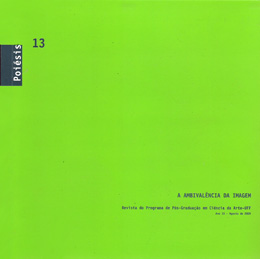Heroísmo forjado no apagamento das polifonias: o canto das esposas da colônia militar de Murphy Canyon, San Diego, Califórnia
DOI:
https://doi.org/10.22409/poiesis.1013.212-239Palabras clave:
arte colaborativa, comunidade, Althea ThaubergerResumen
A história da arte contemporânea tem presenciado a emergência em profusão de projetos de arte desenvolvidos em estreita colaboração com as comunidades, em práticas que aprofundam a crítica do modernismo. O projeto Murphy Canyon Choir / Coro de Murphy Canyon, da artista canadense Althea Thauberger, se configura como uma oportunidade singular para reflexões em torno dessas práticas de colaboração na contemporaneidade.Descargas
Citas
Bishop, C. (2006). “Introduction / Viewers as Producers”. In: (ed.). Participation. Londres: Whitecapel,
Cambridge, Mass.: The MIT Press.
Brenson, M. (1995). “Healing the Time”. In: Jacob, M. J,; ; e Olson, E. Culture in Action. Seattle, Wash.:
Bay Press.
Buren, D. (2004). “The Function of the Studio”. In: Doherty, C. (ed.). From Studio to Situations: Contemporary
Art and the Questions of Context. Londres: Black Dog Publishing.
Bürger, P. (1993, 1974). Teoria da vanguarda. Lisboa: Vega / Universidade.
Davis, M., Mayhew, K., e Miller, J. (2003). Under the Perfect Sun – The San Diego Tourists Never See. Nova
York: The New Press.
Doherty, B. (2007). Studio and Cube: On the Relationship Between Where Art is Made and Where Art is
Displayed. Nova York: Columbia University.
Doherty, C. (2004). “The New Situationists”. In: (ed.). From Studio to Situations: Contemporary Art and
the Questions of Context. Londres: Black Dog Publishing.
Gablik, S. (1996). “Connective Aesthetics: Art after Individualism”. In: Lacy, S. (ed.). Mapping the Terrain – New
Genre Public Art. Seattle, Wash.: Bay Press.
Groys, B. (2008). “A Genealogy of Participatory Art”. In: San Francisco Museum of Modern Art. The Art of
Participation: 1950 to Now. Nova York: Thames & Hudson.
Kester, G. H. (2004). Conversation Pieces: Community + Communication in Modern Art. Berkeley, Cal.:
University of California.
Kwon, M. (2002). One Place After Another: Site-Specific Art and Locational Identity. Cambridge, Mass.: The
MIT Press.
Lacy, S. (1996). “Cultural Pilgrimages and Metaphoric Journeys”. In: _____ (ed.). Mapping the Terrain
– New Genre Public Art. Seattle, Wash.: Bay Press.
Phillips, P. C. (1998). “Temporality and Public Art”. In: Senie, H. F., e Webster, S. (eds.). Critical Issues in Public
Art. Washington e Londres: Smithsonian Institution Press.
Stimson, B., e Sholette, G. (2007). “Periodizing Collectivism”. In: (eds.). Collectivism after Modernism: The
Art of Social Imagination after 1945. Mineápolis: University of Minnesota Press.
##submission.downloads##
Publicado
Cómo citar
Número
Sección
Licencia
Los autores que publican en Revista Poiésis concuerdan con los siguientes términos:- Los autores conservan los derechos de autor y conceden a la revista el derecho de primera publicación. La obra está automáticamente licenciada bajo la Licencia Creative Commons Atribution, que permite compartirla siempre que se cite la autoría y la publicación inicial en esta revista.
- Se permite y anima a los autores a distribuir en línea sus trabajos publicados en la Revista Poiésis (en repositorios institucionales o en su propia página personal), ya que esto puede generar interacciones productivas, así como aumentar el impacto y la citación del trabajo publicado (ver El efecto del acceso libre).


